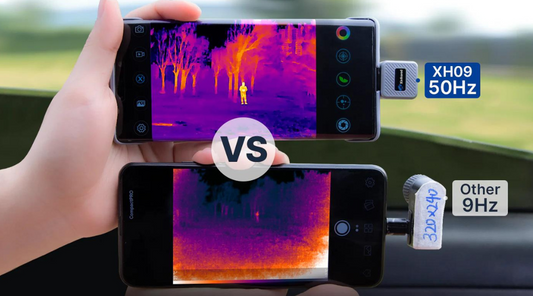What is the Resolution of a Thermal Monocular?
Thermal monoculars are becoming increasingly popular among hunters, law enforcement agencies, and outdoor enthusiasts. These devices allow users to detect and observe heat signatures, making them ideal for night vision and surveillance applications. One of the most important specifications to consider when purchasing a thermal monocular is its resolution. In this article, we'll explain what resolution is and how it affects the performance of a thermal monocular.

What is Resolution?
In the context of thermal imaging, resolution refers to the number of pixels or picture elements that make up an image. In other words, it is a measure of the level of detail that can be captured and displayed by the thermal monocular. The higher the resolution, the more detail you can see in the image. Resolution is usually expressed as the number of pixels in the horizontal and vertical dimensions, such as 640 x 480, 384 x 288 or 256 × 192.
Why is Resolution Important?
Resolution is a crucial factor to consider when choosing a thermal monocular because it affects the quality and clarity of the image. A higher resolution means that you can see more detail in the image, making it easier to identify targets, animals, or other objects. It also makes it easier to distinguish between objects that are close together, such as animals in a group or branches on a tree.

Furthermore, a higher resolution means that you can zoom in on the image without losing clarity. This is especially important for long-range observation, where you need to see objects that are far away. A low-resolution thermal monocular will produce a blurry and pixelated image when zoomed in, which can make it difficult to identify targets accurately. This is Xinfrared T2pro thermal monocular thermal imaging with 256 x 192 resolution.

What is the Resolution of a Thermal Monocular?
The resolution of a thermal monocular varies depending on the model and manufacturer. However, most high-quality thermal monoculars have a resolution of at least 256 x 192. Some models can go up to 640 x 480 or even higher. Generally, the higher the resolution, the more expensive the thermal monocular will be.

It's important to note that resolution is not the only factor that affects the quality of the image. Other factors, such as the thermal sensitivity, image processing algorithms, and lens quality, also play a role. Therefore, it's essential to consider all of these factors when choosing a thermal monocular.
Conclusion
Resolution is a crucial factor to consider when choosing a thermal monocular. It determines the level of detail that can be captured and displayed by the device, which affects the quality and clarity of the image. A higher resolution allows you to see more detail in the image, zoom in without losing clarity, and distinguish between objects that are close together. Most high-quality thermal monoculars have a resolution of at least 320 x 240, with some models going up to 640 x 480 or higher. However, it's important to consider other factors, such as thermal sensitivity, image processing, and lens quality, when choosing a thermal monocular.




